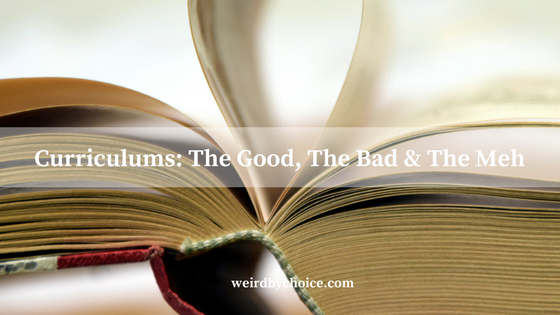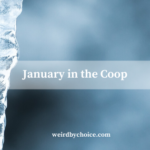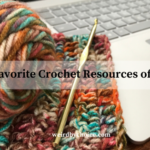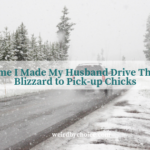I’m gearing up to attend my state’s big homeschool convention in a few weeks, which always gets me excited to plan for next year. As I consider curriculum tweaks, mods and complete about-faces, this has gotten me thinking about the various curriculums we’ve used over our last five years of homeschooling. For the most part, we’ve been blessed with choices that worked fairly well for our family, but there were a couple of stinkers along the way. I thought by sharing my experiences, it might give you some insights as you think about what your next year looks like as well. I am not including the curriculums we’re using this year, since I have separate posts which address our experiences with these.
One thing to note before we begin: My opinions are based completely on my family’s experiences. We all know that different learning styles, teaching preferences, personalities and family make-ups can hugely impact your experience with a curriculum.
THE GOOD
Nancy Larson Science: Levels 2 & 3
This is hands down the best science curriculum we’ve encountered. Both my kids and I loved it and learned so much about astronomy, physics, geology, ornithology, biology and botany. Each lesson is relatively short, but meaty. Information is presented in a very easy to understand way, without over-simplifying or talking down to your kids. Learning exercises are varied from unit to unit and even within subjects, so kids don’t get bored. Teacher’s manuals are scripted, so if you’re not terribly science-minded (like me) you don’t have to worry about explaining things incorrectly. Everything you need for the entire year – experiments and all – are included in one boxed set. And the very very best thing about this curriculum: THE EXPERIMENTS ACTUALLY WORK! In the two years we used this curriculum, I don’t believe I ever had an experiment that didn’t go as planned, which is a huge relief to me and obviously helps cement science concepts for my kids. The boxed set is somewhat pricey, but completely worth it. We are so excited to get back to using this curriculum in the coming year!
Trail Guide to U.S. Geography
This was our first introduction into the Trail Guide collection. We hadn’t included much geography in our homeschooling pursuits and I wanted something which covered the U.S. at a somewhat basic level. Jackpot! Over one school year, we explored all 50 states, created beautiful maps (which my kids actually enjoyed doing!), learned all the capitals, and rounded out our year with a six-week unit study on Lewis and Clark. Like all Trail Guide curriculums, the teacher’s manual includes instructions for three levels of learning, denoted with animal track icons to differentiate. Because my kids had done little geography up to that point, we simply cruised through the basic level and had a blast. I could definitely see us revisiting this curriculum again when the kids are older, and diving deeper through one of the upper levels. The basic bundle which included the handful of resource books we would use was very affordable – and the atlas was one of the best and most beautiful I’ve seen.
THE BAD
Noeo Science: Biology 1
This science curriculum describes itself as a balance between classical and Charlotte Mason. Little did I know at the time that neither of these were a good fit for my family, or at least at their very young ages (second grade and kindergarten at the time). The curriculum includes several lovely books, but my kids were not engaged by simply looking at pictures and listening to mom read the sections. Because of its classical and Charlotte Mason approach, Noeo relies heavily on notebooking or journaling, which sounds very romantic and lovely in a poem perhaps, but absolutely did. not. happen. at our house. “It’s easy kids, just draw a picture of what you learned today and we’ll write a sentence or two.” Blink. Blink. Crickets… After much wailing and gnashing of teeth, one kid draws a robot, the other a flower, neither of which are even remotely related to our topic of the day. As if this wasn’t bad enough, the experiments NEVER WORKED. Like never ever. Not once. Noeo is a cheaper science option than some, but I wouldn’t consider it a good value considering what little use we found it to be.
Galloping the Globe
It may surprise you to find this in my bad pile, since I’m a huge fan of GeoMatters’s offerings, but this one did not work for our family. It’s worth noting that we used this our very first year of homeschooling and I freely admit we had absolutely no idea what we were doing. GTG is essentially a unit study exploring many different countries and cultures throughout the world. Sounds great, right? Well, while GeoMatters sells the required resource books, none of the other books are included, which means you will spend inordinate amounts of time exploring your library’s online options, driving back and forth to the library, yelling at your kids for losing the library books, etc. I know this is homeschool sacrilege, but I seriously HATE the library. Pretty much everything about it. I’ll save my hate-hate relationship with the library for a different post, but suffice to say that a curriculum which requires me to spend so much time on lesson planning, resource research, etc, is not a good fit for my crazy household. Galloping the Globe is quite affordable, though, especially if you’re fine with relying heavily on your library for resources.
AlphaPhonics
This curriculum was recommended to us as we transitioned my son from his kindergarten year in public school, to our first year of homeschooling him for his first grade year. Our district’s approach to reading was heavily phonics-based and relied primarily on phonics drills which were to be timed and completed at home. (I blame this approach for my son’s continued aversion to anything timed or flash card-based.) In many ways, AlphaPhonics is a spiral bound book of these phonics style worksheets, but you don’t have to review them with your kids in a timed fashion. Each page contains letters, blends, and finally works its way up to words, but my son never felt like he was reading by using this approach and I felt his overall learning experience for the year was very limited. I was happy to move on the following year. Because AlphaPhonics is simply one book, it is very inexpensive.
THE MEH
McRuffy Language Arts (K-4th Grade)
You’re probably wondering why we spent four years slogging through a curriculum that was only “meh” for our family. Honestly, my kids enjoyed their McRuffy readers and workbooks for the first few years and I really liked it’s all-inclusive approach to language arts (reading, writing, grammar, spelling…all in one). But, it became quite repetitive over the years with the same exercises appearing each week, regardless of the level, and the stories featured in the readers were fairly uninteresting to all. Because of the repetition, I became guilty of sending the kids away to complete their assignments and frequently forgetting to check their work. My son, who has been a struggling speller for many years, never seemed to improve with McRuffy’s approach, though I have noticed considerable improvement this year, once we changed curriculums. McRuffy is moderately expensive and can add up quickly if you’re using for multiple students. I added the handwriting books each year for my kids, which cost about $25/book, but honestly we would use these for the first few months and then majorly taper off throughout the year.
How about you? What curriculums have worked well for you over the years? How about any that were particularly painful? Let’s help each other out. Leave your mini-reviews in the comments section, or on our Facebook page.





